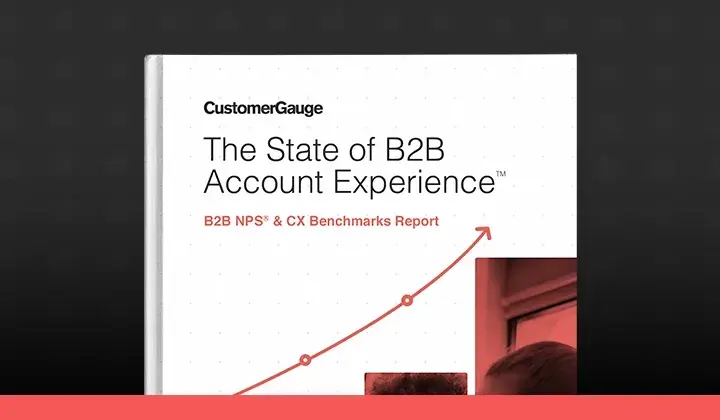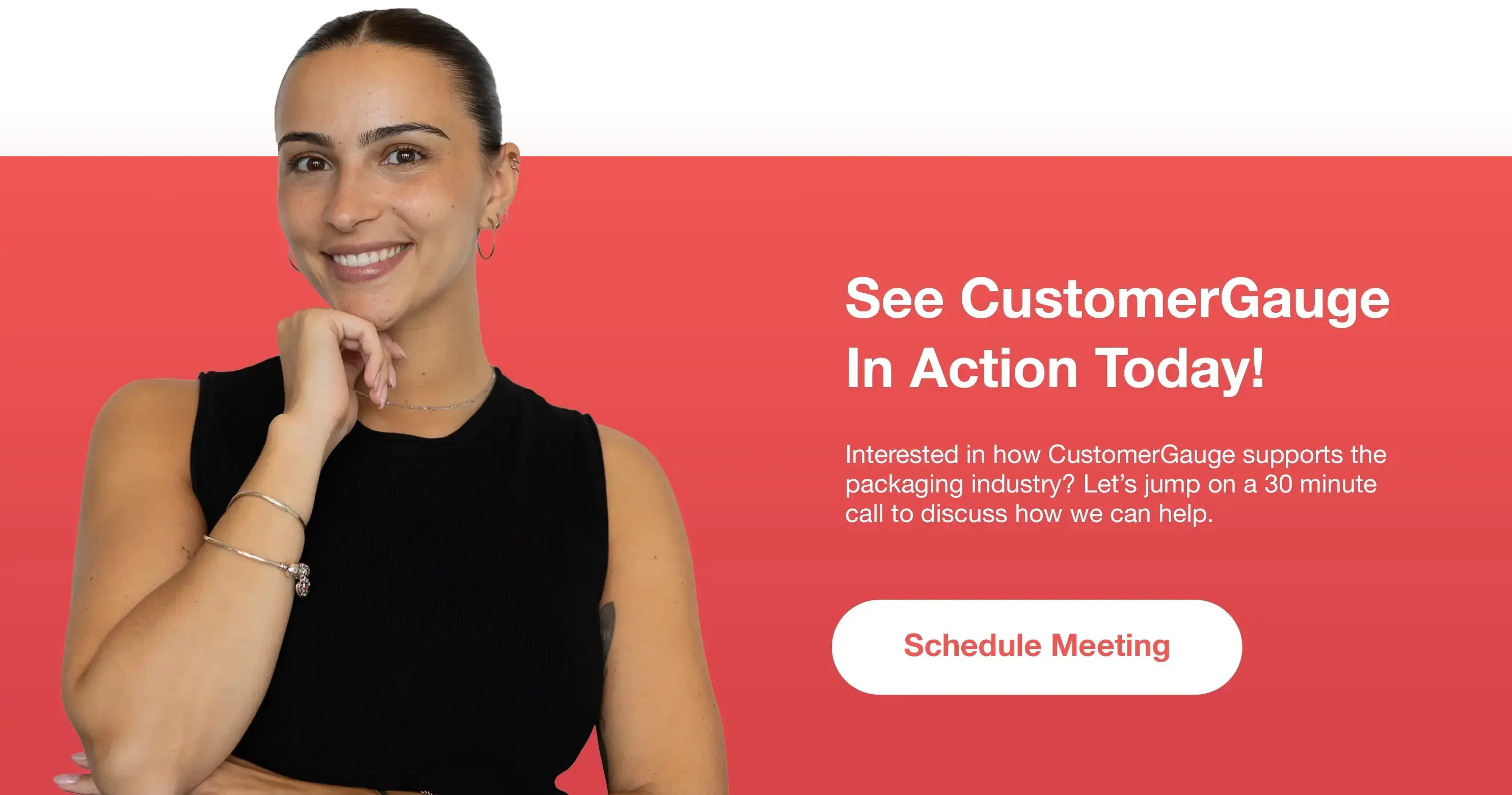How would you react if a consumer looked at your packaging displays in a major retailer and said, "It looks like it's been eaten by a rat!"
In another lively and insightful webinar, CustomerGauge CEO & Co-Founder Adam Dorrell and CPG Experience Council Chairman, Nigel Tordoff, unpacked the often overlooked (yet crucial) role of listening to B2B customers while driving performance across the entire supply chain.
Adam and Nigel emphasized how small packaging decisions can have outsized effects: missed perforations, poor shelf fit, and oversized barcodes may seem minor, but they contribute to lost sales, higher labor costs, and eroded margins.
By involving all stakeholders in the feedback loop, from packaging suppliers to store staff, and breaking down organizational silos, companies can boost customer loyalty, reduce waste, and increase agility.
Real-time feedback, end-to-end visibility, and process changes aren't just quick fixes but essential to long-term success.
Let's unbox the actionable insights for any packaging business looking to improve performance across the board.
How Industry Leaders Turn Feedback into Growth
The most successful companies aren't just collecting customer feedback — they're actively using it to improve every step of their channel experience.
From retail shelves to on-premise placements like bars and restaurants, these organizations are deeply committed to understanding how their products are received and how their partners perceive the experience.
We apply the Net Promoter Score (NPS) methodology across our entire client base, enabling powerful benchmarking across industries.
From our experience, the top-performing organizations follow four key steps to achieve a world-class Account Experience (AX) program:
1. Maximize Revenue Coverage
Rather than settling for occasional pulse surveys, leading brands aim to capture feedback across as much of their revenue base as possible. High response rates don’t just reflect engagement; they signal how much customers actually care.
In fact, we believe revenue coverage is often a more telling indicator than NPS alone.
2. Drive Engagement Through Response Rates
Improving response rates isn’t just a tactical goal — it’s a strategic one. The more voices you hear from, the more accurate and actionable your insights become. High response rates lead to better conversations and deeper relationships.
3. Follow Up on Feedback
One of the most impactful (and overlooked) steps is simply following up. We've seen firsthand how meaningful, timely responses to feedback can significantly lift customer satisfaction scores.
4. Activate Your Promoters
When customers express strong enthusiasm for your brand, don't let it go to waste. These promoters are your most powerful advocates. They’re not only more likely to buy again, but are also the ones recommending you to peers and helping you grow organically.
Using AI to Dive Deeper Into Customer Sentiment
Artificial Intelligence (AI) is transforming how businesses understand and act on customer sentiment.
Whether you're using CustomerGauge or another feedback platform, bringing more sentiment data into your business is critical. AI helps uncover what customers truly feel and what they’re likely to do next.
This is especially powerful in B2B, where relationships can be worth millions. Managing those accounts with human insight, powered by AI, is the key to long-term success.
Adam and Nigel uncovered a powerful stat: Promoters are twice as likely to buy a second product line, proving that understanding sentiment isn’t just smart, it drives revenue.
From Farm to Fridge: Why the Whole Supply Chain Matters
Every link in the Consumer Packaging Goods (CPG) supply chain matters.
In the middle sits assembly, where most CPG businesses operate. A demand signal from a retailer sets off a chain reaction, upstream to packaging teams and raw material suppliers, and downstream to distributors and retailers.
But when harvests fail or supply tightens, sourcing becomes global and complex. One weak link can impact the end consumer, and when the consumer is disappointed, the entire chain feels it.
That’s why more companies are tracking NPS across the full value chain. Because in the end, delivering a great product experience depends on every part of the system working together.
Why Packaging Can Make or Break Supply Chain Success
Take the beer business. When the temperature hits three days over 22°C, demand spikes — not just for beer, but for all kinds of drinks and even ice cream.
But here’s the catch: if packaging suppliers can’t respond fast enough, if there are no cans, no boxes, the whole system grinds to a halt.
As Nigel noted, "NPS in the supply chain are like multiplying numbers...one zero anywhere means the whole thing fails."
Great packaging isn't just a cost center; it’s a growth enabler. Miss a beat, and the risks ripple through the entire business.
Great Packaging Isn’t Just About Transport, But People
One of the most valuable lessons in CPG came from a simple but costly packaging oversight. For Molson Coors, adding glue to boxes solved a pallet stability issue during transport. Shelves were restocked, and everyone thought the problem was solved.
But weeks later, empty shelves returned.
The issue? Store staff wearing gloves were getting sticky hands from the glue — and avoiding the product altogether.
In a competitive beer aisle, that meant the brand was stocked last or skipped altogether.
The takeaway? If packaging makes anyone’s job harder, even in-store staff, the whole system breaks.
"When you're picking probably three, four hundred boxes of beer up on a shift and you get a little bit of glue that transfers from the packaging onto your hands every single time... guess who got built last? We did. Because it's the one they didn't want to do," said Nigel.
Real success comes from gathering feedback across the entire chain: from production to shelf, and especially from the people handling your product every day.
Improving the Retailer Experience Through B2B CX
In limited-assortment retailers like Aldi or Lidl, operations run on just four core metrics:
Revenue – driven by head office decisions
Margin – optimized through efficient sourcing and packaging
On-shelf availability – managed by store staff
Staff hours – minimized through packaging and replenishment efficiency
Sounds simple, but here’s where packaging makes or breaks the model.
If a box holds 20 units instead of 12, that's fewer refills (better availability), less packaging (better margin), and faster shelf-stocking (fewer labor hours). All four KPIs benefit from just one smart packaging choice.
But the inverse is also true. Poor packaging (hard-to-open boxes, oversized barcodes, or branding hidden below shelf height) creates friction.
Staff take longer to stock, shelves sit empty, and brands lose out.
Visibility across the full supply chain, from head office to in-store staff, is critical. Most companies gather feedback from the buyer. Fewer go deeper to distributors or farmers. Almost none regularly learn from the people who stock the shelf.
Yet they are the last people to touch your product before the customer does. If they struggle, you fail.
How Real-Time Feedback Transforms Packaging Growth
Real-time feedback doesn’t just catch problems early, it prevents lost sales before they even start.
Take the example of poor shelf execution due to sticky glue on packaging. The issue wasn’t with the product or the marketing — it was upstream.
Retail staff didn’t want to stock it, so shelves stayed empty. Real-time insights uncovered the “why,” allowing for a fast, effective fix.
This is the power of what we call Fast Track Improvements: rapid feedback, fast decisions, and strategic change that sticks.
But there are two critical caveats:
Go broad with your feedback. Don’t just ask your immediate customer. Get feedback from across the supply chain — from packaging suppliers to retailers to frontline staff.
Fix the process, not just the problem. A quick patch is useful, but if you don’t update your SOPs, you’ll repeat the mistake. And there’s nothing worse in business than making the same mistake twice.
The best customer relationships aren’t built when you’re fixing issues — they’re built when you walk in with proof of what you’ve already solved. When you can say, “Here’s how we saved you time and money,” it opens the door to bigger conversations and better growth.
Feedback is your competitive advantage, especially when it comes from the frontline.
Webinar Q&A
Adam and Nigel took questions from attendees, providing expert insight on beginning a B2B CX program in packaging.


